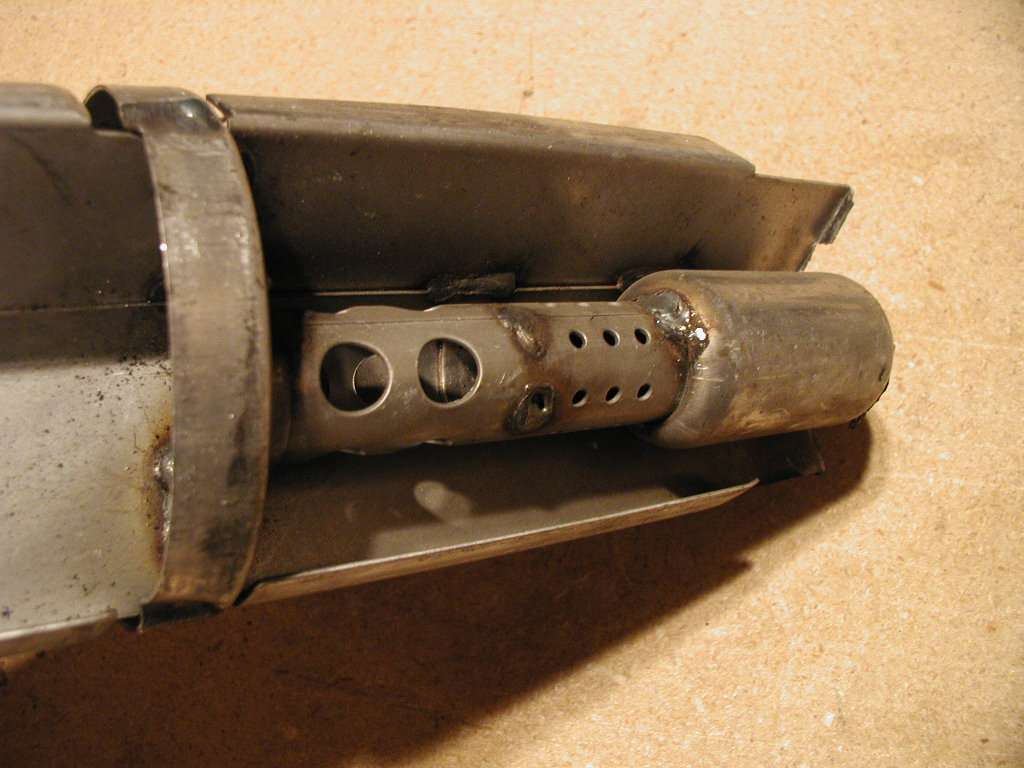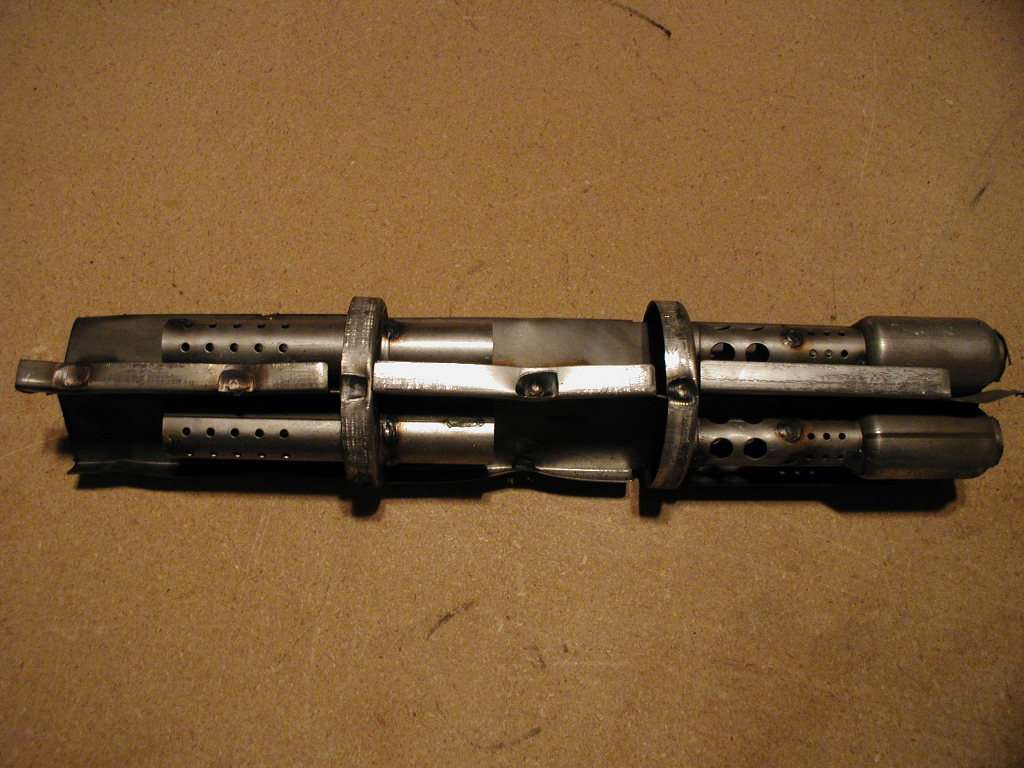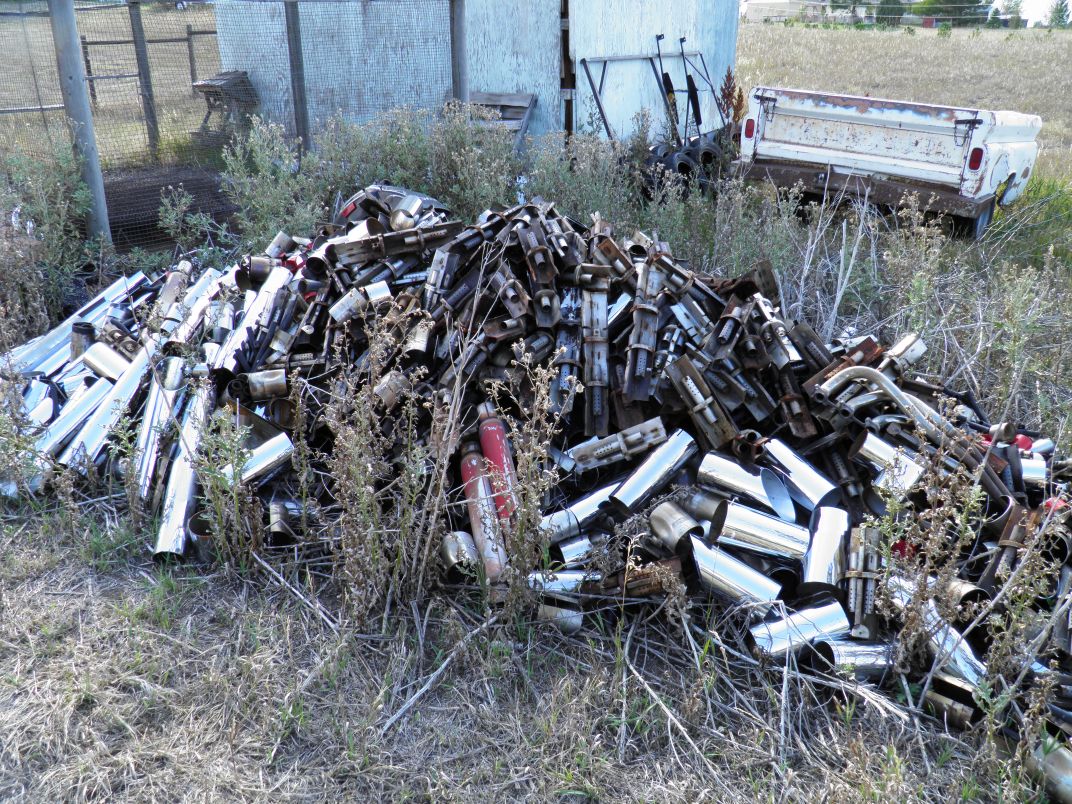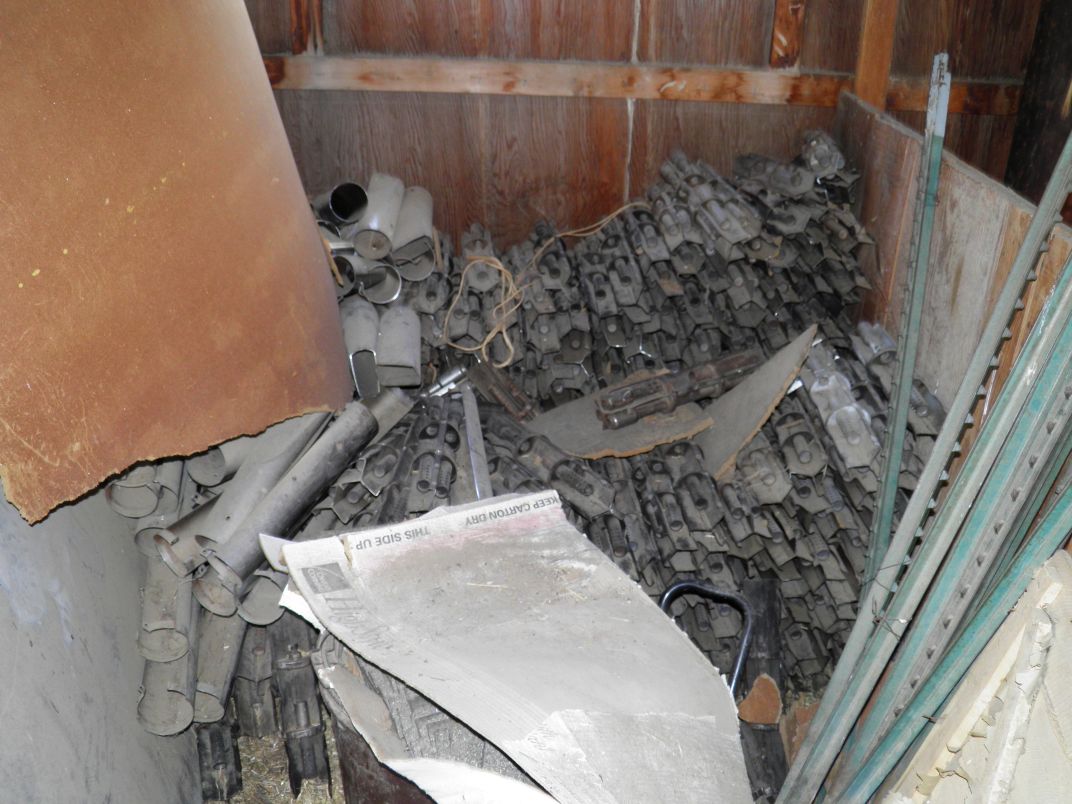|
fraziarwp
|
 |
« on: April 18, 2019, 03:54:45 PM » |
|
I had the understanding that the 3 exhaust systems on each side were completely isolated from each other.
I removed the left OEM exhaust while working on a vacuum leak issue.
I can blow air into any one of the pipes at the header and lots of air will come out of the other 2 headers.
I have 3 sets of OEM exhausts in my garage. All 3 do that.
Is there a common chamber at the end of the header pipes??
Disclosure - One set is unmodified but a rust bucket. One set has rear baffles drilled out. One set has front and rear baffles drilled out.
I ask because the bike does a lot of popping and backfiring on the left side and appears to come from all 3 pipes. But if there is a common chamber, than it could be only one carburetor that has a leak.
|
|
|
|
|
 Logged
Logged
|
1998 GL1500CW - Blue/Ivory
2007 Yamaha FJR1300
2017 Honda CTX700 DCT
|
|
|
|
|
|
Chrisj CMA
|
 |
« Reply #2 on: April 18, 2019, 06:28:08 PM » |
|
Yes to common chambers
|
|
|
|
|
 Logged
Logged
|
|
|
|
MarkT
Member
    
Posts: 5196
VRCC #437 "Form follows Function"
Colorado Front Range - elevation 2.005 km

|
 |
« Reply #3 on: April 19, 2019, 06:55:33 AM » |
|
Yes to common chambers
Sorry Chris - no common chambers. The cylindrical cannister is divided into 3 unique chambers in a pie-pieces fashion. It's a true 6-into-6 exhaust, each path is unique. The O.P. is mistaken somehow on the flow crossing over to the other cylinders in any significant way, on any of the mild mods he describes. (The drilled baffles does not affect this - if badly rusted then there could be holes in the baffle walls but usually such rust appears on the bottom chamber in the baffle walls perpendicular to the flow - not where the air will cross to an adjacent cylinder's flow. Such rust is usually on high-mile pipes from SE states.) The only "common chamber" is inside the tailcone if the "piggies" have been lopped off. And it's open to the outlet so air shouldn't turn around and enter the other 2 passages. The 3 unique passages are not hermetically sealed from each other - eg., the edges of the walls are not welded where they meet the cannister, and they use spot welds a lot elsewhere. 98-03 Pipes have 15 spot welds which secure the baffle assembly to the cannister walls, while 97's have 12. The dents on the flanges in the bottom pic below is where I broke those welds and pushed the baffle away from the cannister before driving it out - the baffle is from a 98-03 exhaust. There are internal weld beads around the 3 headers where they enter the fwd plate, and external incomplete welds where the "piggies" exit. With high miles and corrosion I have seen the entrance welds break many times and repaired them in conjunction with a custom pipe mod. If the pipes are getting the silencer option and the inner baffles are drilled making them ineffective, I have repaired them many times by welding in OEM baffle plugs. There is a small gap at 2 locations on each wall at the juncture of the wall and the cannister right next to the 2 baffle walls, the thickness of the baffle walls 0.047", and 0.25" long. Insignificant. A longer gap, also 0.047" wide, 1.5" long near the final baffles at the exit wall. Note the small gap on the dividing wall.   For the unititated I have been building modified exhausts from the OEM system since 1999, somewhere over 1500 builds. I have thousands of removed baffles to examine. These pics taken several years ago - the piles are much bigger now.   |
|
|
|
« Last Edit: April 20, 2019, 06:56:43 AM by MarkT »
|
 Logged
Logged
|
|
|
|
|
turtle254
|
 |
« Reply #4 on: April 19, 2019, 08:02:32 AM » |
|
Yes to common chambers
Sorry Chris - no common chambers. The cylindrical cannister is divided into 3 unique chambers in a pie-pieces fashion. It's a true 6-into-6 exhaust, each path is unique. The O.P. is mistaken somehow on the flow crossing over to the other cylinders in any significant way, on any of the mild mods he describes. (The drilled baffles does not affect this - if badly rusted then there could be holes in the baffle walls but usually such rust appears on the bottom chamber in the baffle walls perpendicular to the flow - not where the air will cross to an adjacent cylinder's flow. Such rust is usually on high-mile pipes from SE states.) The only "common chamber" is inside the tailcone if the "piggies" have been lopped off. And it's open to the outlet so air shouldn't turn around and enter the other 2 passages. The 3 unique passages are not hermetically sealed from each other - eg., the edges of the walls are not welded where they meet the cannister, and they use spot welds a lot elsewhere. There is a small gap at 2 locations on each wall at the juncture of the wall and the cannister right next to the 2 baffle walls, the thickness of the baffle walls 0.047", and 0.25" long. Insignificant. A longer gap, also 0.047" wide, 1.5" long near the final baffles at the exit wall. Note the small gap on the dividing wall.   For the unititated I have been building modified exhausts from the OEM system since 1999, somewhere over 1500 builds. I have thousands of removed baffles to examine. I have always hear that the cobra 6 into 6 exh lose hp due to no common chamber. Guess its some thing else or their is no real lose in hp due to the cobra pipes. |
|
|
|
|
 Logged
Logged
|
|
|
|
MarkT
Member
    
Posts: 5196
VRCC #437 "Form follows Function"
Colorado Front Range - elevation 2.005 km

|
 |
« Reply #5 on: April 19, 2019, 08:27:26 AM » |
|
As I understand it pipes like the Cobra 6:6 "drag pipes" drop backpressure w/o introducing scavenging. Most Harley aftermarket pipes do the same. The engine is already setup lean - around 17 : 1 at low altitude thx to the EPA, and the drop in backpressure leans it further so w/o rejetting to fatten the mixture back to a level the engine favors, power is lost. Optimal is around 14.7 : 1. Note metric inline 4 bikes come with a performance exhaust that is a many-into-one. Some even a 4-2-1. Much consideration / engineering is done to optimize them and the engine together. The Valkyrie OEM pipes can be easily optimized by dropping the backpressure of the restrictive mufflers while adding scavenging by changing them into a many-into-one. With the scavenging they don't get too lean and in fact performance improves but if you're not living at altitude it doesn't hurt to richen the mixture some anyway - even if you do nothing else to the exhaust. Some of the performance improvement is due to recovering the wasted energy of pushing exhaust through a restrictive muffler. And some is due to the scavenging of the 3-into-one header collector on each side. I also offer the option of adding a crossover to allow both sides of the engine access to the entire exhaust. TBR cannister exhaust used to offer that as well but they quit making pipes for the Valk around 2003. Mine is easier to install however, with flex tube for the crossover. "George" - red blown bobber below, has my crossover exhaust, while Deerslayer's exhaust was built before I developed my crossover, and Jade has a belly tank so no room for the crossover.
|
|
|
|
« Last Edit: April 20, 2019, 06:49:20 AM by MarkT »
|
 Logged
Logged
|
|
|
|
|
Avanti
|
 |
« Reply #6 on: April 19, 2019, 08:28:28 AM » |
|
Are the chambers sealed off from each other or just divided?
|
|
|
|
|
 Logged
Logged
|
|
|
|
MarkT
Member
    
Posts: 5196
VRCC #437 "Form follows Function"
Colorado Front Range - elevation 2.005 km

|
 |
« Reply #7 on: April 19, 2019, 08:35:43 AM » |
|
Are the chambers sealed off from each other or just divided?
The OEM pipes aren't hermetically sealed - just divided. There are very small pathways between them. I just answered this above. |
|
|
|
|
 Logged
Logged
|
|
|
|
|
Chrisj CMA
|
 |
« Reply #8 on: April 19, 2019, 09:03:30 AM » |
|
Ok then. I stand corrected. I had always thought that middle section was common to all three cylinders. Thanks for the expert knowledge.
|
|
|
|
|
 Logged
Logged
|
|
|
|
|
fraziarwp
|
 |
« Reply #9 on: April 19, 2019, 11:00:45 AM » |
|
Thanks for all of the information. Looks like I might have a lot of rusting inside my pipes. I will have to deal with that after I rebuild the carburetors.
|
|
|
|
|
 Logged
Logged
|
1998 GL1500CW - Blue/Ivory
2007 Yamaha FJR1300
2017 Honda CTX700 DCT
|
|
|
|
sandy
|
 |
« Reply #10 on: April 19, 2019, 04:54:13 PM » |
|
Your initial ?? was that you had popping out the left side. There are many things that can cause it. Vacuum lines, intake O rings, air cleaner clamps.
|
|
|
|
|
 Logged
Logged
|
|
|
|
|
fraziarwp
|
 |
« Reply #11 on: April 20, 2019, 06:56:26 AM » |
|
Your initial ?? was that you had popping out the left side. There are many things that can cause it. Vacuum lines, intake O rings, air cleaner clamps.
Working on that now. DeSmogged it and new O Rings and the sound got worse. I am rebuilding the carbs now and will recheck all vacuum seals. I likely made it worse during the desmog. What was baffling me was the fact that popping came from all 3 cylinders on the left side. But, now I suspect that I have enough rusting inside the chambers to get cross over flow. Will deal with that later. |
|
|
|
|
 Logged
Logged
|
1998 GL1500CW - Blue/Ivory
2007 Yamaha FJR1300
2017 Honda CTX700 DCT
|
|
|
|
RipVanWinkle
|
 |
« Reply #12 on: April 23, 2019, 08:45:27 AM » |
|
double check you spark plug wires. just a suggestion. I had mine on the wrong plugs and it had alot of popping.
|
|
|
|
|
 Logged
Logged
|
|
|
|
|
Chrisj CMA
|
 |
« Reply #13 on: April 23, 2019, 09:07:03 AM » |
|
double check you spark plug wires. just a suggestion. I had mine on the wrong plugs and it had alot of popping.
You must have aftermarket wires. It would be pretty hard to do that with OEM sparkplug wires, well at least without knowing something was terrible bad wrong |
|
|
|
|
 Logged
Logged
|
|
|
|
|
Paladin528
|
 |
« Reply #14 on: April 23, 2019, 09:59:59 AM » |
|
desmogging made my bike pop. I turned out the pilots about 1/2 turn to calm it down.
|
|
|
|
|
 Logged
Logged
|
|
|
|
|

